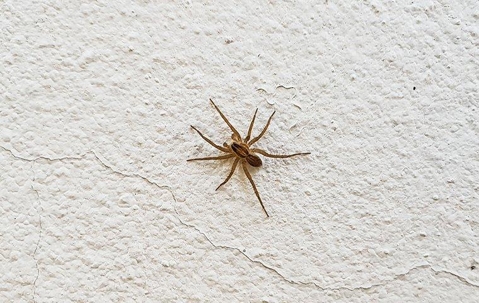Spiders are creepy and disturbing pests that we generally try to avoid at all costs. For Californians, the 1990 horror movie, Arachnophobia brings to life their worst fears. Unfortunately, in Southern California, despite our best efforts, spiders don’t always stay outside where they belong. Spiders that start popping up around your home may become a nuisance, and when you’re caught off guard, they can send chills up and down your spine. With spiders ranging from harmless to incredibly dangerous, it’s essential to understand various spider species to keep your property and home spider-free.
5 Most Common Spiders In Southern California
There are many different types of spiders out there, some wholly harmless and some dangerous.
1. Black Widow
As the most dangerous spider in Southern California, the black widow spider bite can pose a significant threat to humans. However, those who seek medical attention immediately fully recover from the bite. It is easy to identify a black widow because of its coloration and its red hourglass marking on its belly. The southern black widow also has that glossy black coloration and prominent red hourglass figure.
2. California Trapdoor Spider
This spider, as the name suggests, is native to Southern California and is commonly found indoors. Their appearance is similar to that of tarantulas and will bite unsuspecting people when they are disturbed. Although they carry venom, their venom is not dangerous to humans.
3. Long-Legged Sac Spider
This spider likes to hide in the corners of ceilings or under surfaces in buildings and homes. Their venomous bite can be painful and dangerous to humans if it causes an allergic reaction or infection. These spider bites typically heal slowly, but the spider is not particularly dangerous as they rarely bite.
4. Yellow Sac Spider
As a common house spider, they can usually be found on the ceiling or high up on walls, or in their natural outdoor habitat. When threatened, this spider is slightly more aggressive than other house spiders. However, the bite of the yellow sac spider depends on the individual being bitten. The symptoms can range from a small red bump or swelling to a burning sensation after the bite followed by an abscess developing at the infected area. If bitten, it’s essential to catch the spider instead of smashing it so that it can be appropriately identified.
5. Brown Recluse
In Southern California, this spider is a typical house spider. In most cases, the brown recluse spider avoids confrontation with humans and does not bite. They generally live harmoniously with humans and are not considered aggressive. However, the brown recluse bite can cause alarm because the venom can cause damaged tissues to spread to the organs. There is no need to worry though; those who have experienced a bite had no severe reactions and healed on their own.
Why Spiders Enter Your Home
Spiders are attracted to areas in the interior of your home that provide them with food sources, such as areas with high insect activity. If you find spiders in your home, it’s almost sure that you have another pest infestation that’s serving as their prey. The spiders are typically attracted to areas where they can chase down or trap insects in their webs. Therefore, they prefer sites that are not often disturbed or rarely cleaned, such as garages, dark basements, and outbuildings. However, good cleanliness practices that reduce insect populations will also reduce the number of spiders you find in your home.
Tips For Preventing Spiders & Their Pest Prey
To keep spiders from getting into your home, you must first recognize the ways they gain entry. You can also indicate their presence by identifying the warning signs. Spider egg sacs, webs in corners, spiders themselves, and high insect activity are all common indicators of a home that’s infested.
There are a few active steps you can take to prevent spiders from gaining access to your home:
Sweep and vacuum regularly, as this helps to clear out existing egg sacs and spider webs.
Keep your home and property organized and as clutter-free as possible to reduce sheltered areas where spiders hide.
Install door sweeps on all doors that lead outside.
Keep lights turned off at night to reduce the chance that insects will be drawn into your home, also reducing the likelihood that spiders will follow them.
Repair gaps along your roofline and foundation and seal cracks in windows and window screens.
Contact the Professionals At Excel Pest Management
If you don’t adequately protect your home, spiders will keep returning. The best way to ensure complete spider protection is by contacting one of the professionals at Excel Pest Management. We will help you eliminate your spider problem in your South California home for good!
A trusted home pest control plan will keep your home pest-free all year long and remove the possibility that spiders will return. The pest experts here at Excel Pest Management have your back when it comes to spider prevention and removal. To learn how our spider control and treatment plans can help safeguard your home, reach out to us today!

